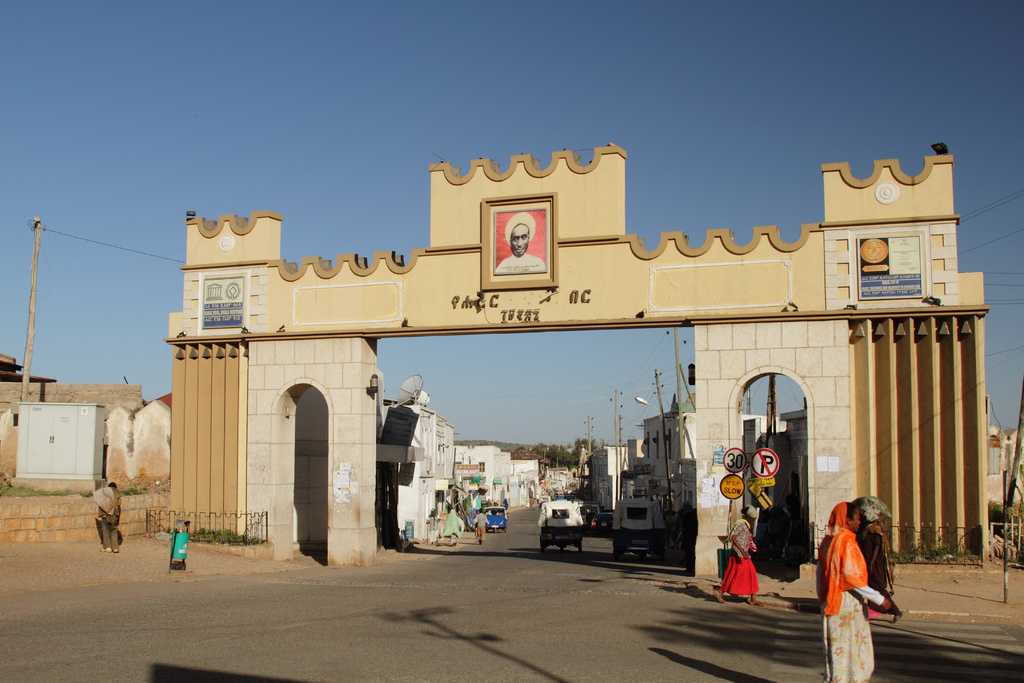
The fortified historic town of Harar is located in the eastern part of Ethiopia, 525 km from the capital of Addis Ababa, on a plateau with deep gorges surrounded by deserts and savannah. Muslims refer to the historic walled citadel of Harar Jugol as the City of Saints, and regard it to be world’s fourth-holiest city after Mecca, Medina and Jerusalem.
Harar is also Ethiopia’s most important repository of Islamic landmarks, with 82 mosques and 438 Awaach (shrines of important Islamic scholars) crammed into its 48 hectares. The city’s lively markets and unique gey gar (city houses) are relicts of the many centuries when Harar served as the most important trade emporium in the Horn of Africa, linking the ports of the Somali coast to the fertile Ethiopian interior, document from Ethiopia Tourism Organization stated.
Jugol Wall
Harar Jugol was inscribed as a UNESCO, World Heritage Site in 2006 believed to be built somewhere between the 13th and 16th century, this thick, 5 metres high and 3.5 km long wall was built to keep away the rising migration of the Oromo people.
This fascinating wall once had five gates: Shoa Gate, Buda Gate, Sanga Gate, Erer Gate and Fallana Gate, each providing five pathways into five different quarters of the city. The building types and the entire urban layout reflect these traditions, which give a particular character and even uniqueness to Harar Jugol.
Still intact, the Jugol Wall is a ravishing symbol of the town to the Harari people and is worth a visit. There were five historic gates, which corresponded to the main roads to the town and also served to divide the city into five neighborhoods, but this division is not functional anymore. The Harar gate, from where the main streets lead to the center, is of recent construction.
Its thick, five-meter-high walls were erected in the 16th century as a defensive response to the neighboring Christian Ethiopian Empire, but today Muslims and Christians share the city in peace. Harar grew into a crossroads for commerce between Africa, India, and the Middle East and was a gateway for the spread of Islam into the Horn of Africa.
The architectural marvel of Harar
The traditional Harari house has a typical, specific and original architectural form, different from the domestic layout usually known in Muslim countries, although reminiscent of the coastal Arab architecture, and with an exceptional interior design.
Their architectural and ornamental qualities are now part of the Harari cultural heritage. Harar functioned as the capital of the Harari Kingdom from 1520 to 1568, became an independent emirate in the 17th century and was integrated into Ethiopia in 1887.
From the late 16th century to the 19th century Harar was an important trade center between the coast and the interior highlands and a location for Islamic learning. Today Harar is the administrative capital of the Harari People National Regional State (HPNRS).
The Harari people are distinguished by the continued cultural traditions and quality of their handicrafts, including weaving, basket making, and bookbinding. The social and spatial structure (afocha) and the language of the people all reflect a particular and even unique relationship that there developed with the environment.
The coffee of Harar
The “City of Saints” has other, more sinful, claim to fame. Harar coffee is said to be the country’s finest, its beer the most popular, its khat (a natural amphetamine-like stimulant) the strongest, and its hyenas the friendliest. Producer of arguably the world’s best coffee, Harar’s local factory is said to produce the highest quality.
In the book Coffee: A Dark History, industry veteran Antony Wild calls Harar “the cradle of coffee itself” and notes that “until the mid-sixteenth century, the demand for coffee was met by Ethiopia entirely.” But coffee pales in popularity to khat, a bitter leaf that gives its chewer a mild buzz.
Citizens of all ages dig into bags of the plant throughout the day to add to the wad in their cheek. But the khat is not just for domestic consumption. Outside Harar is one of the world’s largest khat markets, which shuttles tens of thousands of dollars of the stimulant to Somalia and Djibouti nightly.
The hyena feeding
Just after the nightfall, there is perhaps the city’s most curious custom: hyena feeding. One lone man, the sixth generation of a Harari family to do this, sits beside two large baskets of meat scraps and bones as some 20 hyenas materialize from the inky night. The huge, spotted mammals circle, then, as he calls them individually, home in to be fed chunks from a stick.
Harar’s relationship with its scavenger occupants stretches back at least 500 years. The walls of the old town have holes so hyenas can sneak in and out and it’s thought that they can see and rid townsfolk of evil spirits called “jinn” that possess them. Each year, on the Muslim holiday of Ashura, thousands gather to honor the creatures in with a local tradition seemingly at odds with the town’s holy status.
They invite the hyena pack leader to eat from the three stone bowls of buttery porridge placed outside the city’s wall. Then they measure how much was eaten to predict next year’s fortunes. If the hyena licks the bowl clean it will be a prosperous year, otherwise, tradition mandates that the town must pray to avert famine and disease.
These wild animals are still come through the old town’s gates at night to scavenge among the 5,000 preserved traditional houses painted in bright pink, purple, and blue and accented with geometric designs. There are no street addresses in Harar, but it’s impossible to get completely lost—each street flows back into a familiar central square where cafes serve up spongy flatbread called injera and fava bean dip, and tailors tap away on sewing machines.
Museums
The Sherif Harari City Museum set in the wide-balconied double-story mansion where Emperor Haile Selassie spent much of his childhood, hosts a superb private collection of antique Islamic manuscripts, Harari coins minted during the 18th century, traditional Harari costumes, musical instruments, and household artifacts.
The Arthur Rimbaud Museum is housed in the beautiful fresco-ceilinged house where its namesake poet-turned-trader reputedly lived in the late 19th century. It now functions as a museum with displays dedicated to the poet and a fascinating collection of monochrome photographs of the city taken in the late 19th and early 20th century.
The Ethiopian Herald July 25/2020
BY HIZKEL HAILU




My brother suggested I might like thuis webb site. He was once totally right.
This submit truly made my day. You ccan not consider just how a lot tme I had spent for thhis info!
Thanks! http://Boyarka-inform.com/
Harar’s rich history and unique architecture are truly fascinating! The way the city blends its Islamic heritage with the vibrant, traditional Harari houses is remarkable. It reminds me of how interior design can shape the identity of a space. In Dubai, a city known for its stunning modern architecture and cultural diversity, the Best Interior Design Company in Dubai, Atech, excels at creating personalized interiors that reflect a unique blend of tradition and modernity. Just like Harar’s architectural marvels, Atech’s designs offer clients the opportunity to incorporate both heritage and contemporary elements into their homes or businesses, resulting in beautiful, functional spaces.